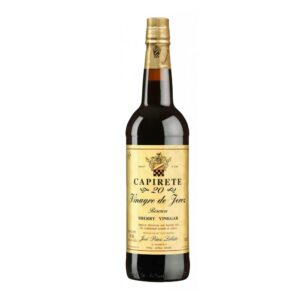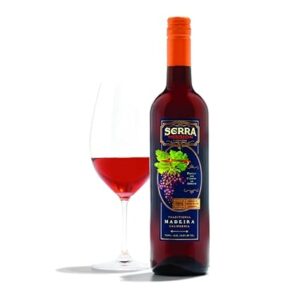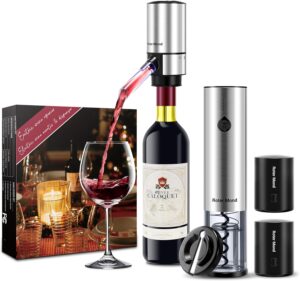Discover Sweet and Strong Varieties
Fortified wine is a distinct category of wine that has been enhanced with additional alcohol, typically in the form of brandy or other distilled spirits. This fortification process not only boosts the wine’s alcohol content but also aids in preservation, allowing it to age longer and develop complex flavors. In this comprehensive guide, we will explore what fortified wine is, its production methods, popular types, and tips for serving and pairing.
What is Fortified Wine?
Fortified wine is characterized by its higher alcohol content, achieved by adding a distilled spirit to the wine. This addition usually occurs during or after fermentation and serves multiple purposes: it halts fermentation, enhances preservation, and contributes unique flavor profiles. Fortified wines can vary from dry to sweet and from light to rich, making them versatile for various occasions.
How is Fortified Wine Made?
The process of fortifying wine involves adding a high-proof spirit, and the timing of this addition affects the final product:
- During Fermentation:
- Method: Spirits are added while fermentation is still active, stopping the process before all the sugars are converted into alcohol.
- Outcome: Results in sweeter fortified wines with increased alcohol content.
- After Fermentation:
- Method: Spirits are added after fermentation has completed, preserving the wine’s natural sweetness while boosting its alcohol level.
- Outcome: Creates a range of styles from dry to sweet fortified wines.
Popular Types of Fortified Wine
- Port Wine:
- Origin: Portugal, particularly the Douro Valley.
- Types: Includes Ruby Port (young and fruity), Tawny Port (aged and nutty), and Vintage Port (produced from exceptional grapes of a single vintage).
- Characteristics: Typically rich and sweet, with flavors such as dark fruits, chocolate, nuts, and spices.
- Sherry:
- Origin: Spain, mainly from the Jerez region.
- Varieties: Includes Fino (dry and crisp), Manzanilla (a variant of Fino with a saline quality), Amontillado (complex and medium-aged), Oloroso (rich and nutty), and Pedro Ximénez (very sweet and syrupy).
- Characteristics: Offers a range of flavors from dry and refreshing to sweet and rich, including notes of almonds, dried fruits, and spices.
- Madeira:
- Origin: Madeira, a Portuguese island.
- Types: Includes Sercial (dry), Verdelho (medium dry), Bual (medium sweet), and Malmsey (sweet).
- Characteristics: Known for its robust flavors and acidity, Madeira can have notes of caramel, nuts, and coffee, influenced by its unique aging process involving heat.
- Marsala:
- Origin: Sicily, Italy.
- Types: Includes Fine (dry), Superiore (aged for at least 2 years), and Vergine (dry and aged longer).
- Characteristics: Flavors range from dry and nutty to sweet and rich, with notes of caramel, vanilla, and spices.
- Vermouth:
- Origin: Initially from Italy, now produced in various regions.
- Types: Includes dry (white) and sweet (red), often flavored with herbs, spices, and botanicals.
- Characteristics: Commonly used in cocktails, with flavors that can range from bitter and herbal to sweet and spiced.
Flavor Profiles and Serving Tips
- Flavor Profiles: Fortified wines offer a broad spectrum of flavors, depending on the type and aging process. Common flavors include dried fruits, nuts, caramel, chocolate, and sometimes coffee or tobacco.
- Serving Recommendations: The ideal serving temperature varies by style. Lighter styles like Fino Sherry are best served slightly chilled (50-55°F or 10-13°C), while richer styles like Port and Madeira are best enjoyed at room temperature (60-65°F or 15-18°C).
Pairing Fortified Wine
Fortified wines pair excellently with a range of foods:
- Port: Ideal with blue cheeses, chocolate desserts, and nuts.
- Sherry: Complements tapas, salted nuts, and aged cheeses.
- Madeira: Pairs well with rich dishes such as foie gras, roasted meats, and strong cheeses.
- Marsala: Great with risotto, roasted meats, and can also be used in cooking.
- Vermouth: Typically used in cocktails but also pairs well with olives, cheeses, and charcuterie.
Conclusion
Fortified wines offer a diverse and sophisticated drinking experience, characterized by their increased alcohol content and complex flavors. From the sweet, rich notes of Port to the robust, acidic profile of Madeira, fortified wines provide an elegant choice for any occasion. Whether enjoyed on its own or paired with food, these wines add depth and sophistication to your dining experience. Explore the world of fortified wines and find the perfect bottle to enhance your next meal or celebration.
FIND WINE ON AMAZON BELOW:
Affiliate Disclosure: This article may contain affiliate links, and we may earn a commission if you make a purchase through these links. We only recommend products or services we believe will add value to our readers.










